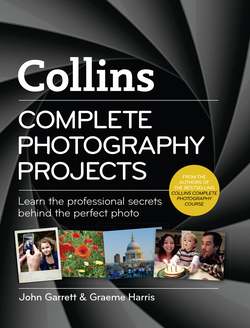Читать книгу Collins Complete Photography Projects - John Garrett - Страница 27
EXPOSURE
ОглавлениеFor most of our careers, correct exposure was the most important technical decision that we had to make because most of our work was on colour transparency film, and the quality of the image was greatly affected if it was overexposed by even +½ stop. It was safer to be –½ stop underexposed to give a rich, saturated transparency for reproduction.
Today, photographic technique is equally divided between the camera and the computer, so if you find your pictures are under- or overexposed you can usually correct that later with image-editing software. However, you do still have to be very careful not to overexpose a subject that has inherent bright highlights. As with transparency film, those highlights ‘blow out’ and lose all detail, and you will never retrieve any detail no matter how much you darken the area on the computer.
Underexposure of a subject with dark areas is not such a problem, as it is possible to retrieve an image underexposed by as much as –2 stops without adding much noise to the shadows.
UNDEREXPOSURE
This picture is underexposed by –2 stops. However, underexposure can often be used for effect – this exposure, for instance, could be used for an evening effect. If it is a mistake, this amount of underexposure can be corrected to almost normal.
CORRECT EXPOSURE
Here the correct exposure for this subject has provided detail from the darkest tones to the lightest highlights. Correct exposure is the ideal starting point to either use as it is or to add your own interpretation to on the computer.
OVEREXPOSURE
This picture is overexposed by +2 stops. Although it can be partially corrected later, the highlights, where they are pure white, will retain no detail as they are totally blown out and cannot be corrected.
HIGH KEY
The high-key effect is traditionally a black and white technique used for babies, children and glamorous women, giving a romantic interpretation of the subject. The lighting is as close to shadowless as possible. It is a good idea to have some small dark areas in the picture to contrast with the overall white tones. This baby picture is lit with soft overhead daylight that has eliminated most of the shadows, giving a soft, dreamy quality. It was overexposed by +1 stop to keep the highlights bright, using exposure compensation. 1/250 second at f5.6, 50mm, 400 ISO. GH
